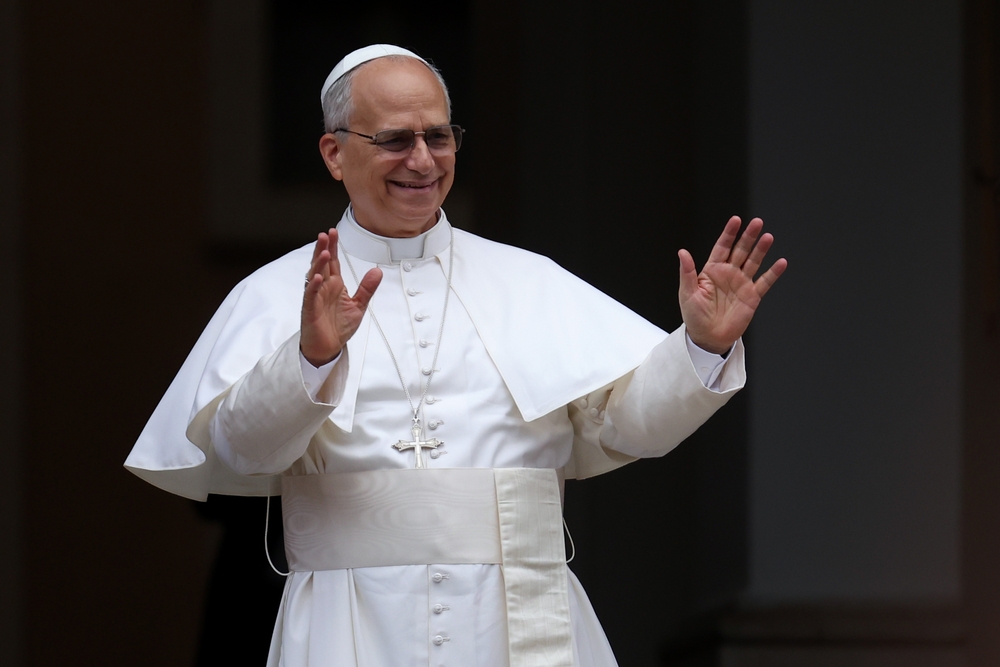What is Pope Leo XIV all about?
(and how can Oblates share his message?)
I’ll bet you’ve heard people ask, “Who is this Pope Leo, and where do you think he plans to lead the Church?”
Is Leo likely to continue in the line of his predecessor, Pope Francis, or did the cardinals elect someone who’ll change course? What does it mean to have an Augustinian canon lawyer as pope? Is Robert Francis Prevost Martinez an American from Chicago, or a missionary formed as a bishop in the Peruvian cities of Trujillo and Chiclayo?
Perhaps some hints towards answers to these questions lie in the October publication of Leo’s first Apostolic Exhortation, Dilexi te.
Dilexi te (meaning “I have loved you” from Rev. 3.9) has been described as “a treasury of church teaching concerning the poor.” In 121 numbered paragraphs divided into five chapters, the document summarizes the pleading of a half dozen Church Fathers, many saints (Lawrence, Justin, Ambrose, John Chrysostom and Augustine) and the charisms of several religious congregational founders to make our relationships with the poor “the burning heart of Christ’s mission” (#15).
“…the poor are at the heart of the church.” Dilexi te, #111
Quite obviously, this text was being prepared as Francis’ life neared its end, and builds on that pope’s third and final encyclical (released a year ago), Dilexit nos, which was written on the topic of the Sacred Heart of Jesus. At the press conference in the Vatican to release the first major teaching of Leo’s pontificate, Canadian Cardinal Michael Czerny was asked how much of the text was Leo’s, and how much could be attributed to Francis? The Prefect of the Dicastery for the Promotion of Integral Human Development answered in true Jesuitical form by replying, “Dilexi te is 100% Leo – and 100% Francis!”
“Anyone who says they love God and has no compassion for the needy is lying.” (cf. 1 Jn 4:20) Dilexi te, #45
If Catholics do not read lengthy papal texts, how might the pope’s message be communicated to parishioners? How might these aspirational thoughts from our church’s teaching be made relevant to Canadians?
“…all of us must “let ourselves be evangelized” by the poor” Dilexi te, #102
For Catholic Social Thought to be incarnated, teachers, homilists and the faithful must understand the reality of poverty in their national and local contexts – or the message risks remaining abstract. Luckily for us, an ecumenical social justice organization, Citizens for Public Justice (CPJ) released their “Poverty Trends 2025” report on October 17, the UN’s International Day for the Eradication of Poverty. This report, chock full of useful data, describes who experiences poverty in Canada as well as answering what we should do about it. CPJ contends that the story of poverty in Canada is a story of inequity – as well as a story of policy choices and outcomes that systematically privilege some and harm others (page 4.)
The report includes a mapping of poverty rates in each province, and because poverty is complex, four measures of the lack of well-being are used. When, for example, the Market Basket Measure is used, some 10.9% of Canadians are classified as below the poverty line (including 12.4% in Ontario.) But when the Low-Income Measure is applied, 17% of Canadians are said to be poor (18.5% in Ontario.) When another statistical measure is used, 25% of Canadians can be said to be “food insecure” (while this rises to an astounding 58.1% of residents in Nunavut.) To no one’s surprise, due to high rent costs across the country, some 11% of Canadians are reported to live in “core housing need.”
Yes, there are many ways to measure poverty – those accompanying reconciliation initiatives will not ignore the fact that 39 active long-term drinking water advisories (as well as 35 short-term advisories) remain in First Nations communities south of the 60th parallel.
Four solutions are offered by social policy advocates like CPJ:
- improving the adequacy and accessibility of income supports;
- providing stability and security through adequate housing;
- improving publicly funded, publicly delivered health and social services; and
- generating needed revenue through progressive taxation.
This latter point remains relevant as the federal government prepares to release its first budget on November 4. According to the Parliamentary Budget Officer, the top 0.01% of economic families in Canada (1,800) own more total net wealth than the bottom 40% (7,031,900) families (page 16.) Budgets are moral documents that can indicate a government’s values – moving a population towards – or away from – equality. As Pope Leo reminded us, inequality is “the root of social ills.” (Dilexi te, #94.)
Sunday November 16 has been proclaimed the day to celebrate “The Jubilee of the Poor.” How will your faith community use the occasion to deepen knowledge of Catholic Social Thought and reach out more effectively to express our faith’s “preferential option for the poor” (Dilexi te, #16)?
“All the members of the People of God have a duty to make their voices heard, albeit in different ways, in order to point out and denounce structural issues, even at the cost of appearing foolish or naïve. Unjust structures need to be recognized and eradicated by the force of good, by changing mindsets but also, with the help of science and technology, by developing effective policies for societal change. It must never be forgotten that the Gospel message has to do not only with an individual’s personal relationship with the Lord, but also with something greater: “the Kingdom of God (cf. Lk 4:43); it is about loving God who reigns in our world. (Dilexi te, #97)
By Joe Gunn


